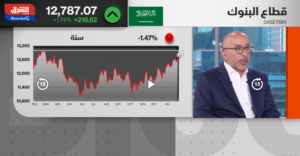A growing tenant base are seeking out communities with their own distinctiveness
Under the constant pressure of finding something new to churn, real estate agents feel the pressure to up their social media game to promote not just the property but the entire Dubai real estate market.
It’s almost considered a dereliction of duty if the community being promoted does not have a social media plan and someone to execute it. The influencers, as they are called, cater to the newer professionals in their quest to capture the influx of talent into the country.
But in an age of ‘glamping’, there are real challenges when there is an influx of a populace, as rents start to shoot up, not only in the residential districts but also in the commercial areas when operators of restaurants, leisure facilities and the like move in to cater to the newer tastes.
Partly, this is a result of demand and supply dynamics, and as the mid-market catches up after the long run in luxury property, areas like Dubai South, Arjan and JVC start to take center stage in terms of people clamoring to move in. Even in areas like International City (which dominates the Ejari lease contracts in terms of market share), the population has barely changed, and yet there has been a substantial increase in rents (28 per cent).
READ MORE
DFM’s 8-year high opens way for a newer generation of investors to get in
Dubai developer Union Properties’ turnaround is cut from a different mould
ADX powerhouse IHC ticks all the boxes fund managers look at
In newer communities, there has been an even more substantive increase of nearly 40 per cent in 2023 alone. This is partly because of bargain hunting, partly because of the increase in population, but also due to the promotion (and self-promotion) of newer and existing developments. Some influencers have gone as far as to make their own apartment sponsored content.
This age of the Instagrammable implies there are more cafes and shops to advertise, but also means that less of the community sometimes feel like home and more like someone’s lifestyle brand. In some cases, what this means is that communities end up becoming replicas of each other.
This is why, as Ejari data shows, there has been a quiet increase in demand for some of the existing areas, like the Greens the Views, Discovery Gardens, Silicon Oasis, and for areas in Dubailand like Liwan and DRC, which have hitherto been ignored.
There is another trend in terms of demand – from younger and older professionals – looking for a ‘city authentic’ feel, looking to capture a little bit of the city’s community charm that are not made up of global F&B franchises but local eateries and a neighborhood feel.
This is the ‘qualia’ aspect of the demand curve, and how this pans out in the coming year will create a reorientation of demand. Overall rents will start to moderate but particular areas will continue to remain bright spots (particularly in mid-income areas and relatively older parts of town).
Highlight community-specific ‘flavours’
We have seen certain areas becoming creative (Discovery Gardens, International City and the Greens) in promoting their local charm. On a financial level, there will always remain a challenge to supply adequate housing that is affordable. The frenzy of new developments implies that cost push inflation will raise prices even higher in newer communities, even as apartment sizes contract.
Equally, there is a counter push (even through the use of owner associations) where there is an increasing amount of light thrown on the unique aspects of each area, such as the size, the relative quiet feel, and the lower churn of the neighborhood. This is being baked into the price equation.
There has even been a resistance to social media influencing where it has become virtually impossible to distinguish one community from the next.
Regardless of the approach, communities (and the agents and influencers who promote it), communities are moving towards managing their growth in a sustainable manner. The hype surrounding the post-Covid rush has begun to fade, and what is replacing it is showing up in the data (where more than 80 per cent of Ejari contracts are for 1- and 2-bedroom communities).
Investors, end-users, and even tenants are scrutinizing this aspect of the demand curve, and this variable will likely dominate the zeitgeist in the next year.
Sameer Lakhani
The writer is Managing Director of Global Capital Partners.





